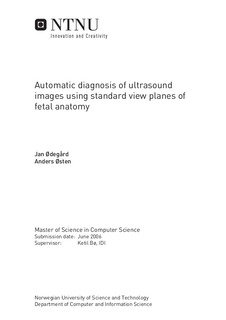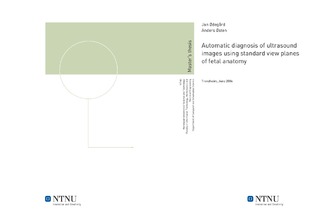| dc.description.abstract | The use of ultrasound has revolutionised the area of clinical fetal examinations. The possibility of detecting
congenital abnormalities at an early stage of the pregnancy is highly important to maximise the chances of
correcting the defect before it becomes life-threatening. The problems related to the routine procedure is its
complexity and the fact that it requires a lot of knowledge about fetal anatomy. Because of the lack of training
among midwives, especially in less developed countries, the results of the examinations are often limited. In
addition, the quality of the ultrasound equipment is often restricted. These limitations imply the need for a
standardised procedure for the examination to decrease the amount of time required, as well as an automatic method
for proposing the diagnosis of the fetus.
This thesis has proposed a solution for automatically making a diagnosis based on the contents of extracted
ultrasound images. Based on the concept of standard view planes, a list of predefined images are obtained of the
fetus during the routine ultrasonography. These images contain the most important organs to examine, and most
common congenital abnormalities are therefore detectable in this set. In order to perform the analysis of the
images, medical domain knowledge must be obtained and stored to enable reasoning about the findings in the
ultrasound images. The findings are extracted through segmentation and each object is given a unique description.
An organ database is developed to store descriptions about existing organs to recognise the extracted objects. Once
the organs have been identified, a CBR system is applied to analyse the total contents of one standard view plane.
The CBR system uses domain knowledge from the medical domain as well as previously solved problems to identify
possible abnormalities in the case describing the standard view plane. When a solution is obtained, it is stored
for later retrieval. This causes the reliability of future examinations to increase, because of the constant
expansion of the knowledge base.
The foundation of standard view planes ensures an effective procedure and the amount of training needed to learn
the procedure is minimised due to the automatic extraction and analysis of the contents of the standard view plane.
The midwife only has to learn which standard view planes to obtain, not the analysis of their contents. | |

